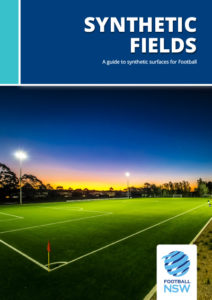 Synthetic football fields are revolutionising the game in NSW with administrators now able to schedule more matches in all weather and players praising the regular frequency of games and the true, predictable bounce the surface provides.
Synthetic football fields are revolutionising the game in NSW with administrators now able to schedule more matches in all weather and players praising the regular frequency of games and the true, predictable bounce the surface provides.
There are around 40 synthetic football fields across the state with others currently under construction and more in the planning stages.
Seymour Shaw Park in Sutherland established the first synthetic football field in NSW in 2007 and there are now six of the twelve teams in Football NSW’s premier competition who play and train on synthetic surfaces.
A synthetic surface allows three times the frequency of use compared with a grass surface and while maintenance is necessary the time and money required is significantly less than maintaining a grass field. A synthetic field’s durability and versatility means clubs can hire the ground out to other users and generate revenue.
As the technology used in synthetic field construction continues to evolve, this guide contains invaluable advice on best practice construction and maintenance of synthetic fields.
Football NSW also addresses issues which have arisen as synthetic surfaces become more prominent.
The process of planning and construction of synthetic fields can be complicated and while this is not a how to guide it is designed to streamline the procedure and help clubs engage with councils to choose the best type of synthetic surface for their particular needs and appoint the most suitable contractor for construction and method of ongoing maintenance.
This expert guide was compiled by Football NSW’s Synthetic Adviser Martin Sheppard, Managing Director of Smart Connection Consultancy, in association with Football NSW.
Updated in October 2017.

